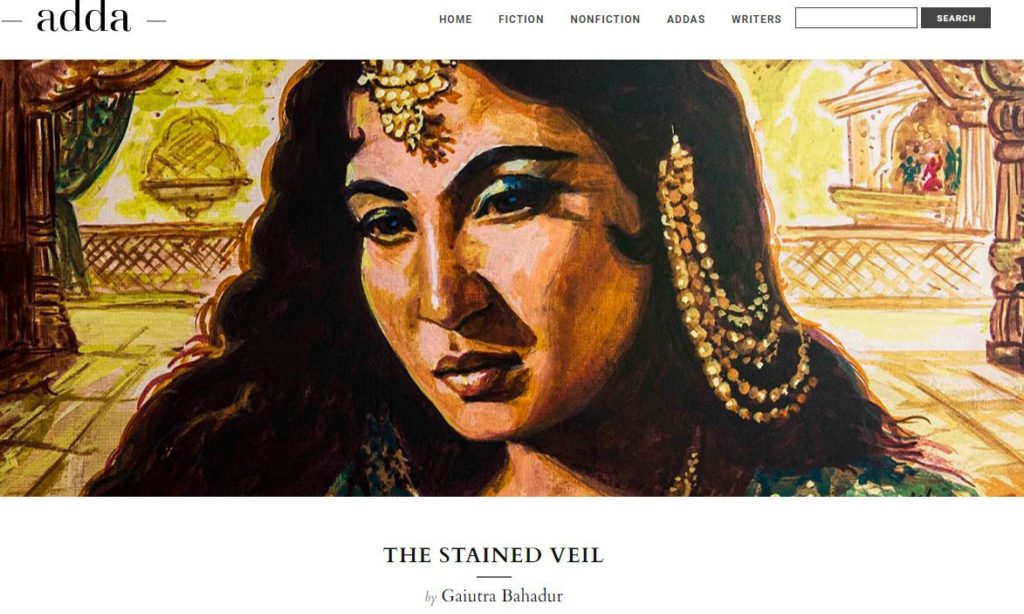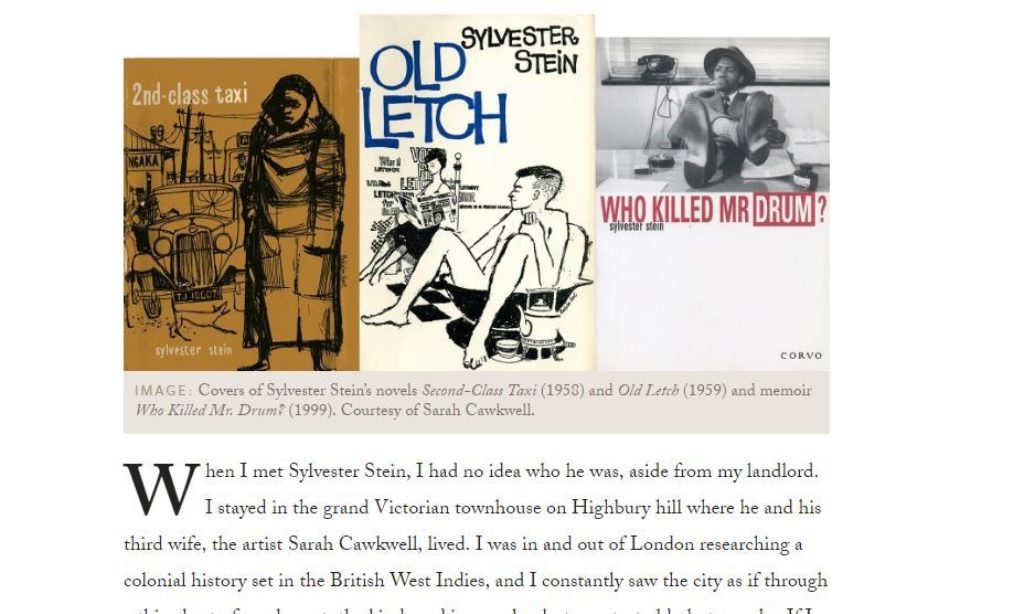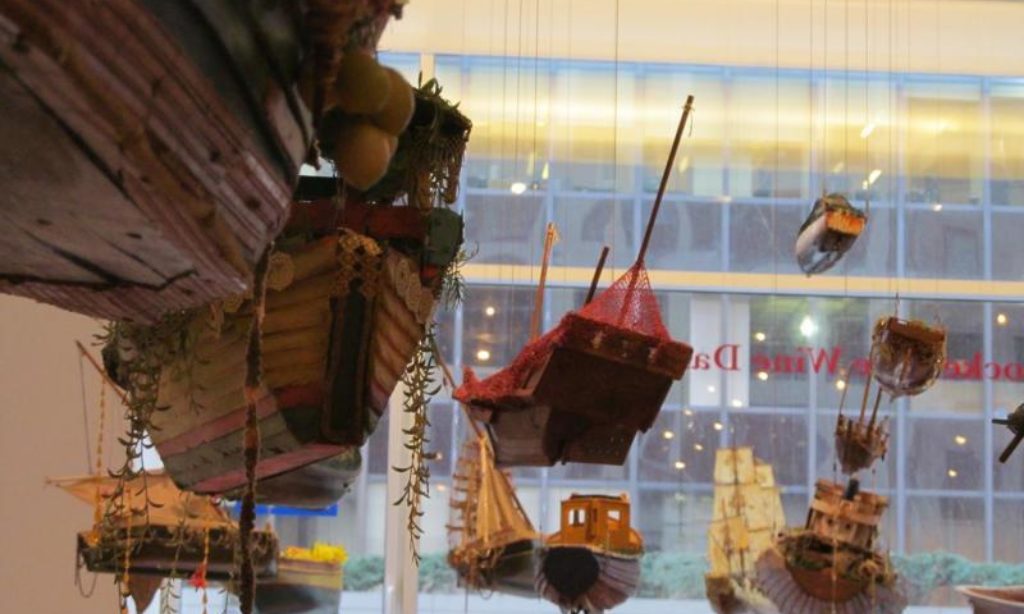NONSTOP METROPOLIS: A New York City Atlas
(Oakland: University of California Press, 2016.)
Edited by Rebecca Solnit and Joshua Jelly-Schapiro
Chapter 9
ARCHIPELAGO: The Caribbean’s Far North
Of Islands and Other Mothers
By Gaiutra Bahadur
Guyana, my birthplace, might as well be an island. It sits in South America but belongs less to the mainland than to water. Anyone who has been there when it rains can testify to that. So did the dozens who died in floods there a decade ago, or the many thousands who, enslaved two centuries ago, had to manually excavate 100 million tons of earth to carve the drainage canals indispensable to growing sugar along the often-submerged Atlantic coast. Rainforests and an absence of interior highways separate the country from the rest of the continent, as does history. Guyana’s colonial masters were British, not Spanish or Portuguese. The English it speaks, creolized on its plantations with the vocabulary and grammar of India and Africa, connects it to the Anglophone Caribbean. Culturally, it floats out on its deserted own. If the archipelago of the West Indies didn’t claim my home country, who would?
Guyana, a swamp the size of New Jersey with less than a million people, is a blip in the geopolitical ocean. It ranks in two things: suicides (the world’s highest rate) and exodus (aside from two minuscule islands in the South Pacific, the world’s highest outmigration rate). Its people choose to leave it in droves, whether by quitting existence or quitting its borders.
Which brings us to another archipelago. Despite Guyana’s tiny population, it accounts for the fifth largest group of immigrants in New York City. About 140,000 New Yorkers were born in Guyana. They have settled in separate enclaves, as ethnically divided here as they are “back home.” About a third, overwhelmingly of African origin, have settled in a few Brooklyn neighborhoods: East New York, Crown Heights, and Flatbush. Twice as many, overwhelmingly of Indian origin, have settled in Queens, mainly in Richmond Hill and Ozone Park. There, at the last stop on the A train, as I descend from the elevated subway tracks, the aromas of the street tell me where I am. Curry is in the air, and so is the devotee’s incense, and together both plunge into my lungs, instantly intoxicating.
Two features distinguish the modest, close-set houses here: arabesque chrome fences polished to an aspirant’s shine and Hindu prayer flags in an array of colors—the white of Saraswati (goddess of learning), the pink of Lakshmi (goddess of prosperity), and the red of the monkey god Hanuman (which British troops in Guyana in the 1960s mistook for a communist signal). The pennants point to a Caribbean reality far more complex than one might imagine, in this city where a million people trace their roots to the region. The flags suggest a world unseen, beyond the street.
When Derek Walcott accepted the Nobel Prize for Literature in 1992, the great poet from St. Lucia described the Antilles as “our archipelago becoming a synonym for pieces broken off from the original continent.” This was no lament but a shout of joy for our parallel attempts to reassemble the shards of language, of religion, of epic from separate homelands in Africa and Asia. What others mourned as mere parody, Walcott celebrated as poignant gestures toward reconstituted identity. His hope was that the descendants of the enslaved and the indentured might see how our fragments actually form a chain that connects us. We are all heir to rupture, from whichever continent.
The organizers of Brooklyn’s annual West Indian Day Parade also trumpet unity. In this city where revelers from disparate nations come together each Labor Day to celebrate carnival, Caribbean people have forged ties often impossible to imagine on isolated islands. New York is the place where we have become “West Indian.” But the limits of that unity lie close to the skin. For as much as the West Indian parade is touted as a symbol of federation, it’s a gathering still dominated by English-speakers from major islands like Jamaica and Trinidad, home of the Antilles’ biggest carnival. Dominicans and Puerto Ricans, who have their own parades, largely stay away, and the historical exclusion of Haitians has long marred its claims of inclusivity. Caribbean New Yorkers with roots in India, who number more than 100,000, barely participate.
Where, amid these fractures and our failures to see our fragments side by side, might “Caribbean unity” lie? Some look to Labor Day’s revelers, crowding Eastern Parkway during carnival. Others look to those other highly visible icons of Caribbean New York: the backgammon and domino players who line Church Avenue in Flatbush, and so many sidewalks here on warm summer evenings. They slap dominoes onto folding tables in a rhythm (brap-brap-brap!) that keeps time with back-home dialects. But overwhelmingly, it is men who perch out under grocery store awnings or in the shelter of the odd oak tree. And the streets mislead. What is fundamental about Caribbean New York is hidden inside. In a sea of difference, the one demographic factor that might make an archipelago of Caribbean immigrants in New York is the number and role of women.
Among this city’s immigrants from the Caribbean, there are far more women than men. There are 91 males per 100 females in New York as a whole, but among both Guyanese and Haitian immigrants, the male/female ratio is 79 per 100; for Jamaicans and Dominicans, it’s 69 per 100; and for Trinidadians, it’s 65 per 100. Mexican, Indian, Pakistani, and Bangladeshi immigrants, by contrast, are disproportionately male. What’s more, Caribbean women participate in the labor force at higher rates than women from the other groups. On average they earn less than their countrymen, and they may be less visible, because they work inside homes, as nannies or housekeepers or health care aides. For many countries, the migration out was led by women, who then sponsored family members, including husbands and sons, to come to America. Often, these women were nurses, allowed to enter during a nursing shortage in the United States.
That’s how my family came to America. The Jersey City Medical Center hired a nurse aunt in the 1970s—and she brought a husband, who brought a sister, who brought my parents, my baby sister, and me in 1981. We lived five miles from the World Trade Center, just across the Hudson River. From the fire escape of our apartment on the Palisades, we could see the Twin Towers. Outside that view loomed large, but inside our apartment the geography was defined by a linen closet. Behind its white shuttered doors perched the gods my mother had brought from our village: framed photographs of Lakshmi, Saraswati, and Hanuman.
The image of my mother praying dominates my memories of our first years in America. With a white lace ohrni covering her head, eyes shut, nostrils flared in demure steeliness, she stood in front of the closeted altar singing devotee’s songs with an intensity that made me quiet. Any reader of Jamaica Kincaid, the Antiguan American novelist, will know this terrain, this point at which mother and motherland meet, a juncture charged with too much love, too many expectations, and subtle accusations of abandonment. Both mother and motherland give you a hard time for leaving; neither quite lets go of you. Both, too, are sacred.
And in the hidden Caribbean, the worship of Mother is everywhere. Indians brought their faith in the goddess Kali to the Caribbean and also transformed it. At the Shri Maha Kali Devi Mandir in Brooklyn, worshippers call her Kali Mai or simply “Mother.” Its website attempts to explain her duality—fiercely dark, yet nurturing—with a nineteenth-century mystic’s words: “She is like the ocean under the moonlight, from far it is black and scary, but up close, the water is clear and pure.” Orthodox Hindus view Kali’s followers as transgressive because fealty to her can involve spirit possession, animal sacrifice, and fire walking. But Kali’s Brooklyn temple is a place where Caribbean women come to inhabit their full humanity and embrace identities as believers and mothers, not just immigrants and laborers.
On a recent visit I met a Guyanese American woman chosen to speak for the goddess. Tisha Morrison’s very body—hazel eyes, hair marked as African, skin the same color as mine—joined the fragments from Asia and Africa that Walcott invoked. She told me how her father, half-black and half-Indian, practiced Hinduism offhandedly, and how some of her mother’s ancestors were Kali worshippers from South India. Kali temples were in the backdrop of Tisha’s childhood, but she practiced Catholicism. In Brooklyn she attended Pentecostal churches until she and her mother fell on hard times about five years ago, when Tisha started to receive visions. Once, while brushing her teeth, the pungent smell of fish and the sea filled her bedroom. A lady wearing white suddenly floated past. Panicked and bewildered, Tisha Googled “fish-smelling lady in white.” The search engine deciphered the vision: it was Kali’s sister, an incarnation of the Ganges River. “The Mother,” Tisha said, was telling her that she “needed to come home.” More Googling ultimately led to the Shri Maha Kali Devi Mandir, where women are allowed to be priests, breaking Hindu orthodoxy, and worship lasts all day.
Tisha told me that envisioning the divine as maternal is a way of acknowledging her own mother, who brought her out of Guyana to deliver her from violence. When the pair emigrated, they were fleeing her father, a boxer with political connections who physically abused her mother. “Everyone’s mother is part of Mother Kali because Mother has . . . that unconditional love,” Tisha explained. “When you want to give up, you just look at her . . . and you feel defended in the physical and the spiritual—and protected.”
Some worshippers at the Kali temple also follow Spiritual Baptism, which allows for spiritual possession too. This syncretic religion was started in Trinidad by former American slaves resettled there in reward for fighting on the British side during the War of 1812. In Spiritual Baptism the orishas, who act through healers and mediums, are from West Africa, but its rites are inflected with Hindu fragments, as it developed in a corner of Trinidad with a large Indian population. Mothers also figure prominently in its churches.
Spiritual Baptist churches are scattered all across Brooklyn, in storefronts or, in the case of St. John’s Spiritual Baptist Church, in the basement of a Flatbush apartment building. With its brick back facing the street, St. John’s barred windows are painted over like ever-lidded eyes. Its recessed doorway retreats behind a metal gate. At an adult baptism I attended there, feet stamped and hips moved for many hours. Congregants cried out and danced as if entranced, the way they had at the Kali temple. And their ceremonies were just as intense with incense and drumming—and just as taboo. (Until 1951 Spiritual Baptism was an underground faith, banned by the colonial government, its followers derided as “shouters.”) On the day of the baptism I witnessed, the abbess who heads St. John’s sat enthroned, wearing sunglasses, near an altar. Occasionally, she tended it, rearranging ritual objects I know as Hindu. She was dressed the way all the female parishioners were: in a long skirt with an apron, a belt around her waist, her head wrapped in a kerchief. The outfit brought to mind the Aunt Jemima of pancake mixes—a mammy image burdened, for many of us, by racist stereotype. For some Spiritual Baptists, however, she’s one of a long line of ancestral mothers, including Jesus’ grandmother, who communicate with them, visiting them in dreams and visions.
“Other-mothering,” as the Spiritual Baptists call it, beckons all mothers except biological ones: grandmothers, godmothers, and even the stereotypical plantation mammy who nursed the master’s children. For the many Caribbean women who have migrated to New York as domestic workers, the role of other-mother mirrors how they make their living: taking care of other people’s children, while in some cases leaving their own behind. Those far from their families sometimes need to be mothered too. During the baptism ceremony, I witnessed elder women in the church standing behind younger candidates for the faith (all but one of them young women), adjusting their white robes from time to time, setting a lazy foot straight, fixing a posture, or whispering encouragement or rebuke into their ears. Mother is an actual title in the Spiritual Baptist hierarchy, earned through devotion.



